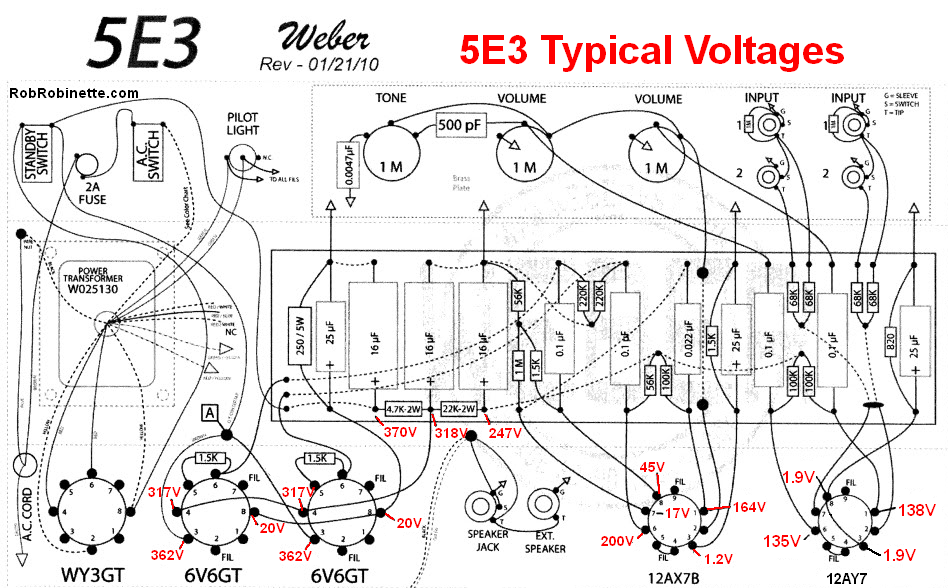

Like a good Deluxe, it starts to distort at “3,” but this version is also considerably louder than vintage examples, which is great for guitarists who want to gig with a Deluxe.

The tighter low-end response prevents the speaker from “farting out” when the low E string is popped too forcefully as well as the rectifier sag that can make power chords sound flabby. The Edge Deluxe has that elusive magic-namely the lush, harmonically rich distortion-while also offering what many would consider sonic enhancements. I own an original 1957 tweed Deluxe, and while Fender’s recent versions have come close they lacked a certain magic of the original. The Edge Deluxe is by far the best tweed-style amp to come off the Fender workbench in the last 10 to 15 years. The pickups produce a beefy, fat midrange and treble that sparkles without being thin or shrill, and when played through an overdriven amp the tone is ample and voluptuous-like Marilyn Monroe compared to the stick-thin super model tone of many modern Strats. The Edge Strat absolutely nails The Edge’s tones on U2 songs like “Bad,” “Pride,” “Still Haven’t Found What I’m Looking For,” and “Where the Streets Have No Name,” but more importantly it provides the best Strat tone, particularly for rock, that I’ve heard from a new Fender guitar in years. However, it also features several modifications and refinements, including a standby switch, a 12-inch 15-watt Celestion Blue speaker (instead of the original’s blue cap Jensen), an updated tone stack with tighter bass response, custom-tapered volume control, protective rubber switch covers that keep out dust, and The Edge’s hand-designed grille logo badge. The Edge Deluxe offers many features found on the original late-Fifties 5E3 tweed Deluxe, including a 12-watt hand-wired circuit powered by two 6V6s, two 12AX7s, and a 5Y3 rectifier, four inputs, single tone control, individual Mic and Instrument volume controls, finger-jointed solid-pine cabinet, and lacquered tweed covering. The Edge admits that he discovered the allure of the tweed Fender Deluxe rather late, specifically in 2003, but he immediately put it to good use to record what is arguably U2’s greatest single of the last 12 years, “Vertigo.” The Edge Deluxe is based on The Edge’s favorite 1957 Deluxe (with the 5E3 circuit), which is one of several late-Fifties tweed Deluxes that he owns. Unlike the standard versions of both models, which have staggered polepieces, the pickups made for The Edge Strat have flat polepieces. The neck and middle pickups are Fender Custom Shop Fat ’50s single-coils, while the bridge pickup is a DiMarzio FS-1.

Perhaps the most significant feature of The Edge Strat is its pickups. Like the Strats in The Edge’s stage arsenal, this model is available in any color you like as long as it’s black.
FENDER 5E3 FARTING OUT UPGRADE
However, numerous refinements upgrade the guitar to modern player preferences, including a rounded neck heel with asymmetrical four-bolt neck plate that provides more comfortable access to the uppermost frets, a modern C-shaped neck profile, “all short-post” locking tuners, polished stainless steel block saddles, and a modern two-point synchronized tremolo with pop-in arm.

The Edge Strat’s basic foundation is similar to a Seventies-era Strat, featuring an alder body and a one-piece quartersawn maple neck with the distinctive “oversized” CBS-era headstock, a 9 1/2-inch radius, and 21 medium jumbo frets. The Fender The Edge Strat is based on the bevy of black Seventies Strats that The Edge has taken out on tour with U2 for decades (a ’73 model being his favorite).


 0 kommentar(er)
0 kommentar(er)
